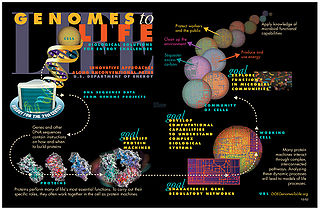Systems Toxicology is aimed at decoding the toxicological blueprint of active substances that interact with living systems. It resides at the intersection of Systems Biology with Toxicology. It integrates classic toxicology approaches with network models and quantitative measurements of molecular and functional changes occurring across multiple levels of biological organization. The multidisciplinary Systems Toxicology approach combines principles of biology, chemistry, computer science, engineering, mathematics, and physics with high content experimental data obtained at molecular, cellular, organ, organism and population levels to characterize and evaluate interactions between potential hazards and the components of a biological system. It is aimed at developing a detailed mechanistic as well as quantitative and dynamic understanding of toxicological processes, permitting prediction and accurate simulation of complex (emergent) adverse outcomes. Thereby, the approach provides a basis for translation between model systems (in vivo and in vitro) and study systems (e.g. human, ecosystem). Systems Toxicology, therefore, has an ultimate potential for extrapolating from early and highly sensitive quantifiable molecular and cellular events to medium and long term outcomes at the organism level. Its application could be part of a new paradigm for risk assessment
Systems toxicology is an interdisciplinary sub-discipline of Systems biology and Toxicoloy.

Systems biology (Systeomics) is an emerging approach applied to biomedical and biological scientific research. Systems biology is a biology-based inter-disciplinary field of study that focuses on complex interactions within biological systems, using a more holistic perspective (holism instead of the more traditional reductionism) approach to biological and biomedical research. Particularly from year 2000 onwards, the concept has been used widely in the biosciences in a variety of contexts. One of the outreaching aims of systems biology is to model and discover emergent properties, properties of cells, tissues and organisms functioning as a system whose theoretical description is only possible using techniques which fall under the remit of systems biology. These typically involve metabolic networks or cell signaling networks.[1] Systems biology makes heavy use of mathematical and computational models and sometimes inspires new mathematical theories[citation needed].
Overview edit
Systems toxicology can be considered from a number of different aspects:
- As a field of study, particularly, the study of the interactions between the components of biological systems, and how these interactions give rise to the function and behavior of that system (for example, the enzymes and metabolites in a metabolic pathway).[2][3]
- As a paradigm, usually defined in antithesis to the so-called reductionist paradigm (biological organisation), although fully consistent with the scientific method. The distinction between the two paradigms is referred to in these quotations:
History edit
Systems biology finds its roots in:[citation needed]
- the quantitative modeling of enzyme kinetics, a discipline that flourished between 1900 and 1970,
- the mathematical modeling of population growth,
- the simulations developed to study neurophysiology, and
- control theory and cybernetics.
Associated disciplines edit
Bioinformatics and data analysis edit
Other aspects of computer science, informatics, statistics are also used in systems biology. These include:
- New forms of computational model, such as the use of process calculi to model biological processes (notable approaches include stochastic π-calculus, BioAmbients, Beta Binders, BioPEPA, and Brane calculus) and constraint-based modeling.
- Integration of information from the literature, using techniques of information extraction and text mining.
See also edit
- Biological computation
- Computational biology
- Network Biology
- [[Weighted correlatio
References edit
{{Reflist|2|refs =
[3] Zeng BJ. , On the concept of systems biological engineering, Nov. 1994, Communication on Transgenic Animals, CAS, China. [4]
Further reading edit
- Asfar S. Azmi, ed. (2012). "Systems Biology in Cancer Research and Drug Discovery": 423. ISBN 978-94-007-4819-4.
{{cite journal}}: Cite journal requires|journal=(help) - Kitano, Hiroaki (15 October 2001). Foundations of Systems Biology. MIT Press. p. 320. ISBN 978-0-262-11266-6.
External links edit
- ^ Bu Z, Callaway DJ (2011). "Proteins MOVE! Protein dynamics and long-range allostery in cell signaling". Advances in Protein Chemistry and Structural Biology. Advances in Protein Chemistry and Structural Biology. 83: 163–221. doi:10.1016/B978-0-12-381262-9.00005-7. ISBN 978-0-123-81262-9. PMID 21570668.
- ^ a b Snoep, Jacky L; Westerhoff, Hans V (2005). Alberghina, Lilia; Westerhoff, Hans V (eds.). "Systems Biology: Definitions and Perspectives". Topics in Current Genetics. 13. Berlin: Springer-Verlag: 13–30. doi:10.1007/b106456. ISBN 978-3-540-22968-1.
{{cite journal}}:|chapter=ignored (help); Cite journal requires|journal=(help) - ^ a b "Systems Biology: the 21st Century Science". Institute for Systems Biology. Retrieved 15 June 2011.
- ^ Sauer, Uwe; Heinemann, Matthias; Zamboni, Nicola (27 April 2007). "GENETICS: Getting Closer to the Whole Picture". Science. 316 (5824): 550–551. doi:10.1126/science.1142502. PMID 17463274.